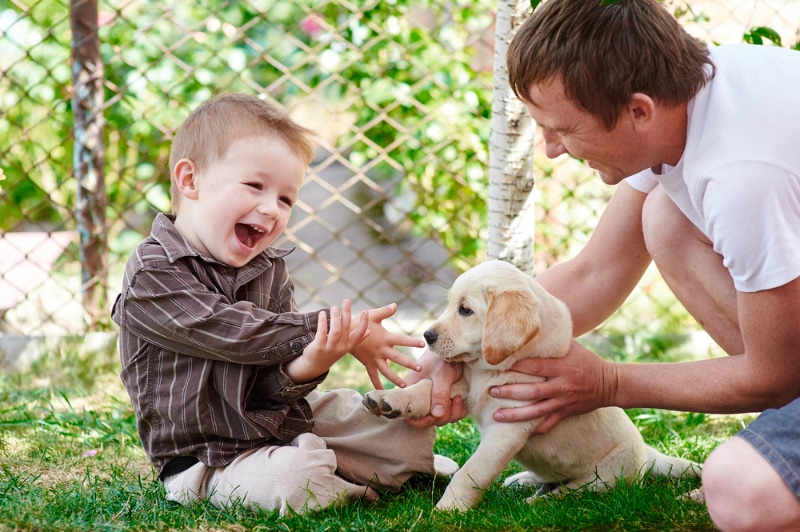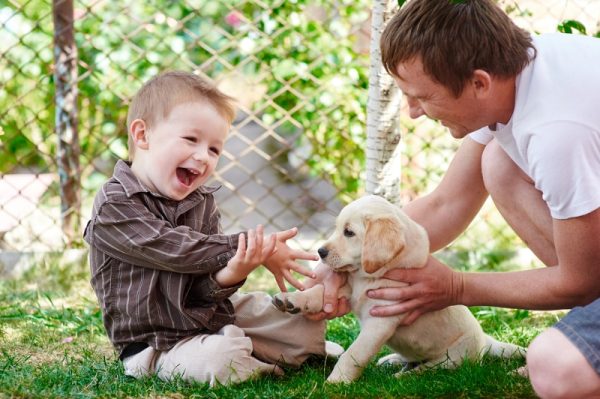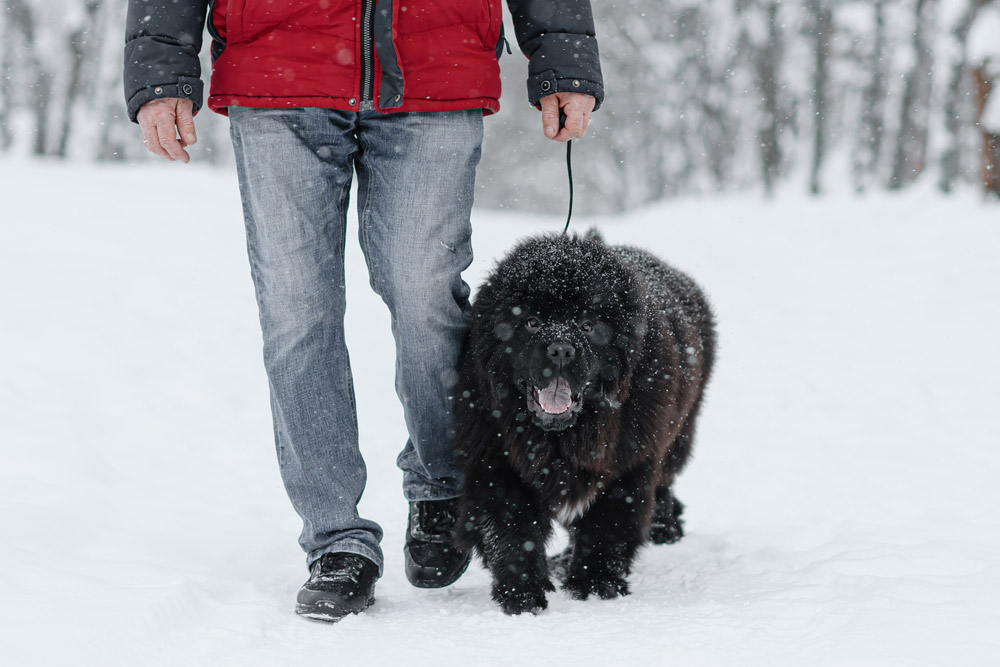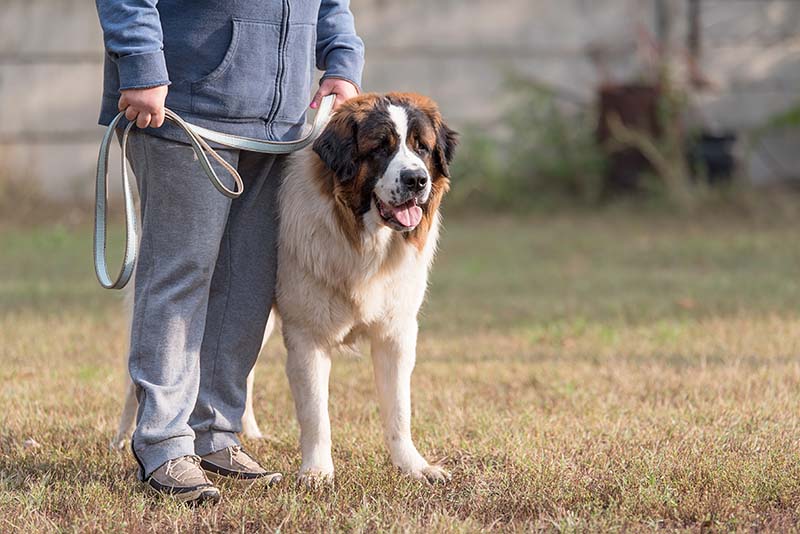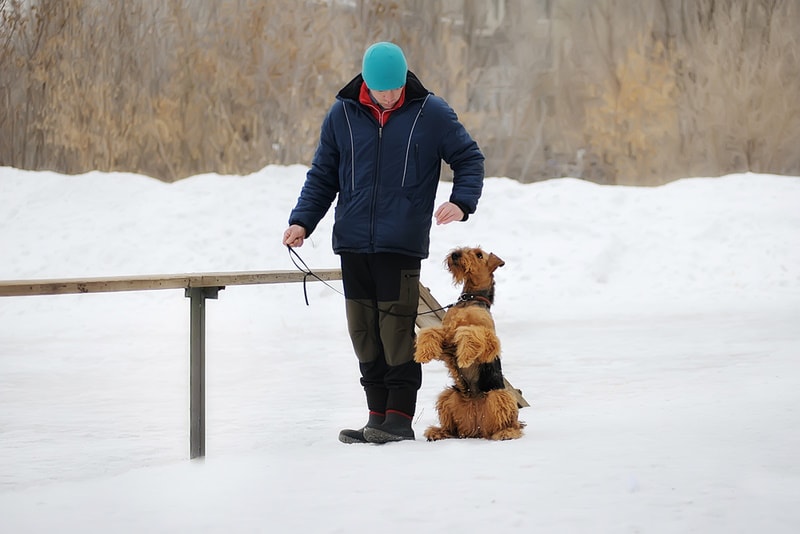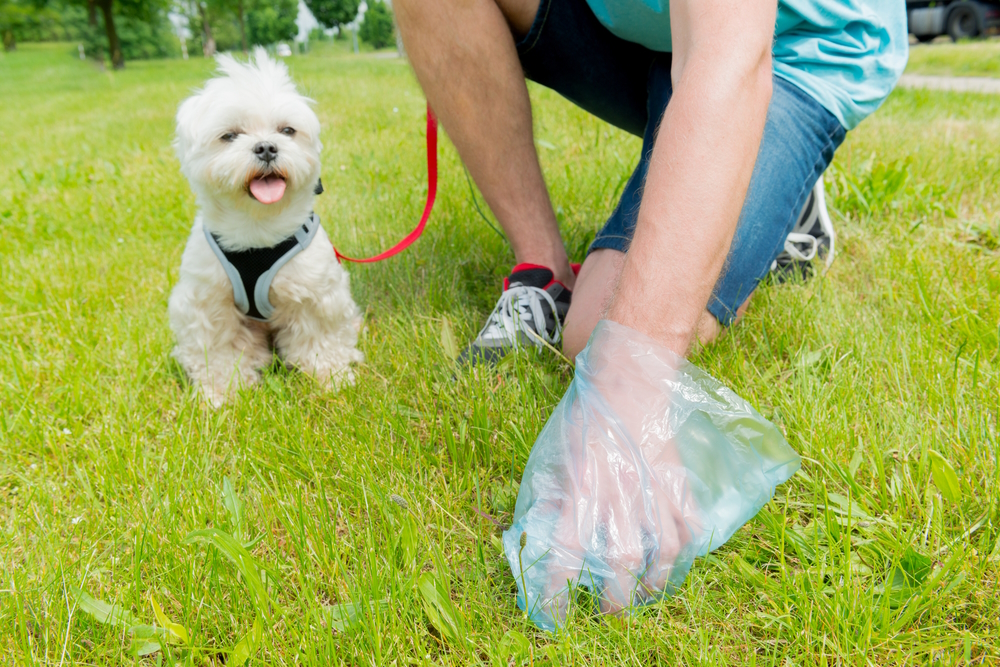Click to Skip Ahead
Just before my daughter started toddling, I brought home a Weimaraner puppy. I thought it would help my daughter grow up to be a dog lover and get the puppy, Asimov, used to being around children. Honestly, it brought with it several challenges and quite a bit of work.
But the two did form an unbreakable bond. Sometimes it felt like they were ganging up on me. It took some planning and a lot of caution, but they not only coexisted, but they also became thick as thieves. Keeping puppies and toddlers together is not only viable but it does lead to some sweet moments.
Below are some tips to help you plan and strategize your new family life, as well as a list of dog breeds that are considered among the best breeds for families with toddlers.
The 9 Tips for Living With Puppies and Toddlers
1. Watch Body Language

Puppies and toddlers might be different species but one thing they have in common is that they can’t fully emote their feelings through words. You will need to learn to read body language. Determine when your toddler is getting tired. They’re more likely to grab at your dog or do something that irritates them.
Similarly, learn to recognize the signals your puppy is giving off. If it’s had enough playing and is looking for an escape, you should start to see the signs. Once you can read your toddler’s and puppy’s body language, you can use the information you glean to help both of them.
2. Always Be Cautious
No matter how much you trust your puppy or think your toddler is respectful around dogs, they are both young. They’re both prone to bouts of mischief and may accidentally end up hurting one another. And, unfortunately, it only takes a second for a friendly game to turn into something worse. Don’t leave them unattended when they’re playing together.
Make sure you pay attention when your child has food or your puppy has a treat, as these are common causes of problems. If necessary, separate them while giving treats.
3. Teach Your Toddler Boundaries
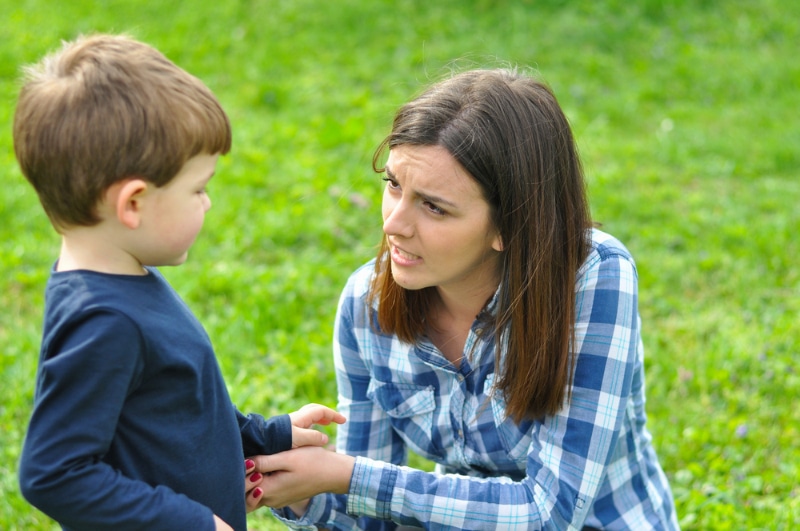
Toddlers grab at anything to help pull themselves up and if your toddler is still a little unsteady on their feet, they will likely go to grab your dog as a means of stopping themselves falling over. A swooshing tail is also a very tempting toy for toddlers. Pulled hair and tails can cause anxiety and anguish in your dog and that may lead to them not wanting to spend time with their human sibling. Or, worse, it could lead to warning nips and attempted bites.
Your toddler is always learning and, in the same way you teach them not to go near radiators or to stay away from potentially harmful objects around the house, you need to teach them not to grab or pull at the puppy.
4. Give Your Puppy Space
Puppies sleep a lot. And most puppies want to spend some time alone, especially if they get overwhelmed with new experiences. Make sure your puppy has their own bed, away from your toddler, and they have free access to it, especially after playtime and at times when you notice they’re getting a bit tired or a bit grumpy. The bed can include toys and it should be a space reserved just for your puppy. If they head off to the bed, make sure your toddler doesn’t follow. It needs to be a safe space for rest and important napping.
5. Give Your Toddler Space
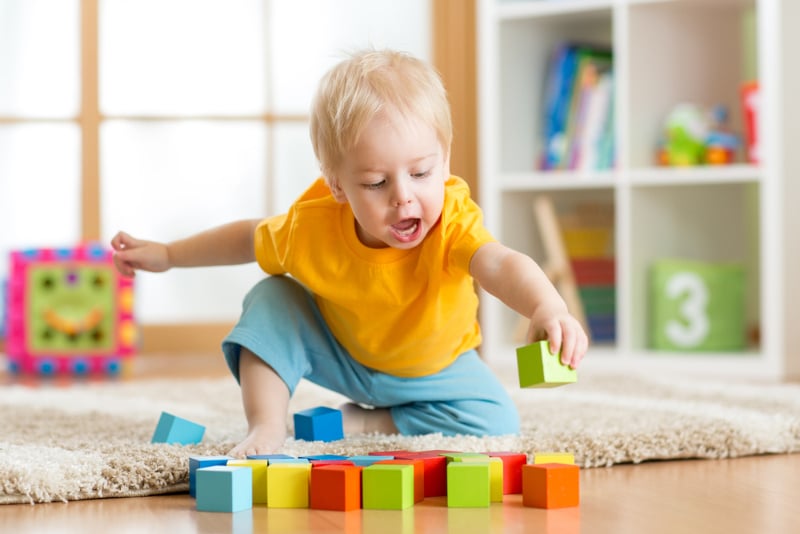
Similarly, your toddler also needs space, and will benefit from being able to get away from the puppy. Toddlers can easily get over-excited and overstimulated. As well as daily naps in a cot, if your toddler is sitting down and playing a game on their own, try to make sure your puppy isn’t all over them or generally hounding them.
6. Use Stair Gates
You’ll likely have at least one stair gate at home if you have a toddler, and they can become one of your greatest assistants. While they don’t replace the need to teach the puppy and the toddler how to act around the other, they can provide a literal barrier when it’s nap time or if your baby is getting overstimulated.
7. Have Fun
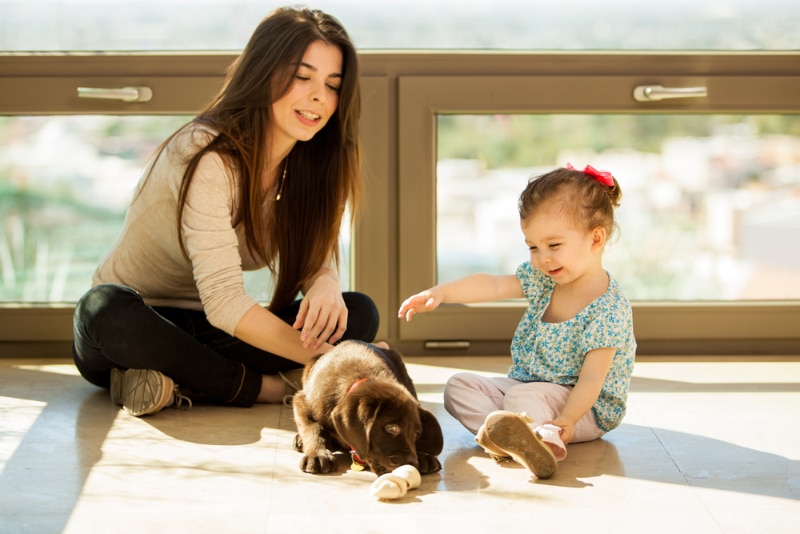
Toddlers and puppies pick up on our emotions, which means if you’re stressing about whether they’re behaving and whether they are getting along, this will pass along to both of them, and it can set the relationship back. You do need to pay attention and be alert to any potential problems, but you also need to have some fun and keep the mood light.
8. Get Professional Help
If you’re struggling to control your dog around your toddler, you need to take action quickly before it gets out of hand. Get professional training help, either by going to a dog trainer, or in more serious circumstances, with the help of a dog behaviorist. They can teach your dog how to act around children and they can also teach you how to effectively train your dog yourself.
9. Don’t Force the Issue
Some children love dogs. Some don’t. Some dogs love toddlers. Others don’t. Just because you want your toddler and your puppy to get along, doesn’t mean they will necessarily become best buddies. Don’t try forcing them together. If they don’t get along and ignore one another, you have to face the fact that it isn’t meant to be. You should still teach them both to be respectful of the other.
Family-Friendly Dog Breeds
Honestly, a Weimaraner isn’t the best choice of dog to have around children. Asimov was boisterous, barked a lot, and was quite accident-prone. His tail was also very strong and at an unfortunate height for adults and children. It took me a lot of work and a lot of vigilance, and if you’re after an easier time introducing a puppy and a toddler, here are 5 family-friendly dog breeds that can make a great addition to your home.
1. Labrador

Labrador Retrievers are a bit on the large side, but they are smaller as puppies, and their general character means that their size isn’t usually an issue. Not only are they accepting of children, but they tend to be very affectionate and careful with them. They are also easy to train and will get along with any other young visitors to the house.
Labradors can also be quite boisterous, so you will need to put aside some time to try and wear them out.
2. Beagle

The Beagle is smaller than the Labrador. It is also fun and funny, and it is a very friendly little breed that can make a great choice for a family dog. If you’re looking for a puppy to form a close partnership with your toddler, the Beagle is a good choice, but keep in mind that they have high energy needs and can be prone to barking and baying, especially when playing.
3. Cavalier King Charles Spaniel

The Cavalier King Charles Spaniel is a sweet-natured dog that is small, easy to handle, and enjoys relaxing and playing equally. King Charles Spaniels can be sensitive, though, and you will need to teach your toddler not to grab at ears and clumps of fur.
4. Staffordshire Bull Terrier
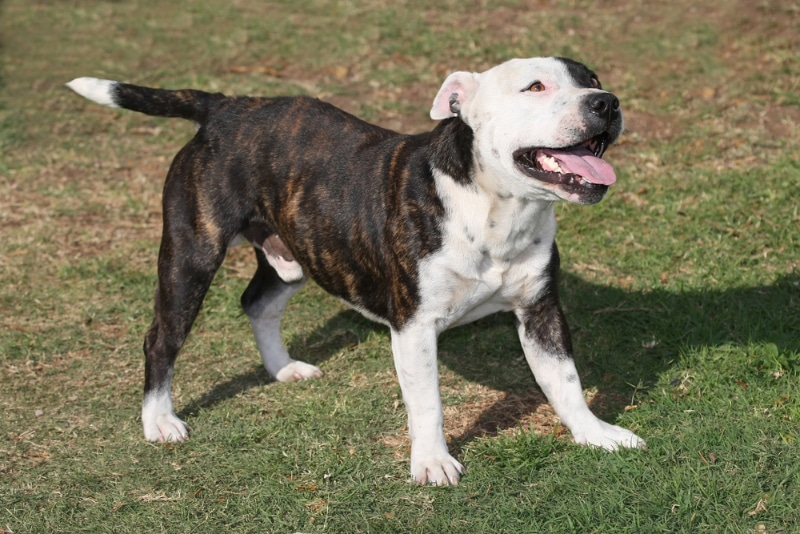
The Staffordshire Bull Terrier is nicknamed the nanny dog because of how good they are around children. They are a very loyal and protective breed, and they will require a lot of early and ongoing socialization to ensure they grow up to be well-adjusted dogs, but the Staffy makes a great addition to a loving and sensible family.
Conclusion
Having raised a puppy and a toddler together, I know there are challenges: not least when you choose a breed like the Weimaraner, which is loud, lively, and not the gentlest of dogs. But I also know that young children and dogs can form a very close bond when they are raised together.
Be prepared, have gates, treats, stair gates, and dog beds on hand, and spend time teaching both young family members how to behave respectfully around the other. Don’t try to force the issue and do give your dog somewhere to escape if your toddler is getting a bit grabby.
Featured Image Credit: Tymonko Galyna, Shutterstock

